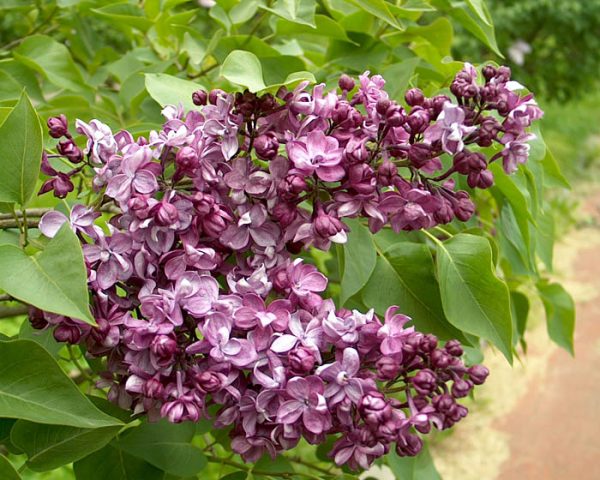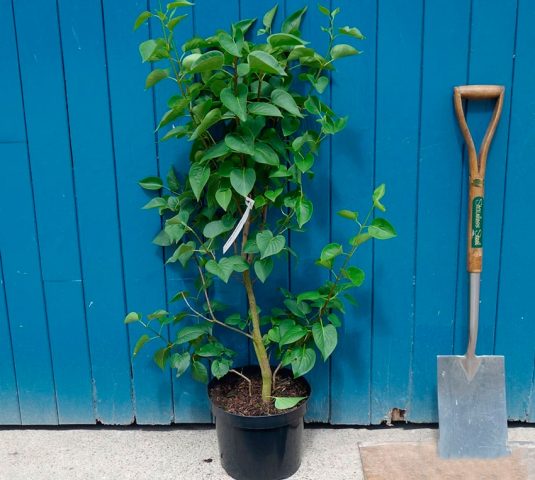Content
Lilac belongs to the shrub culture of the Olive family. The genus has about three dozen species. One of the interesting views is the Morning of Russia. This sprawling bush is able to decorate any territory with its purple inflorescences. Reviews of lilacs Morning of Russia indicate that the variety is quite rare, but at the same time popular.
Description of lilac Morning of Russia
Common lilac varieties Morning of Russia (pictured) is considered a medium-sized shrub, the height does not exceed 2 m. The leaves are large, green.
The Morning of Russia variety is rare, but the reviews about it are positive. It is distinguished by good frost resistance, can be grown in the conditions of central Russia. Differs in drought resistance. Pests and diseases rarely affect this lilac variety.
How the lilac blooms Morning of Russia
The buds of the Utro Rossii variety have a mauve shade. Blooming purple inflorescences, rather large - up to 3.5 cm in diameter, fragrant. During flowering, the bush is literally strewn with dense pyramidal panicles. Flowers are resistant to fading.
Breeding features
Lilacs can be propagated in various ways:
- using seeds;
- cuttings;
- layering;
- root shoots.
With the help of seeds, you can grow a bush that is not at all the same as it was, so this method is rarely used.
Cuttings can be harvested at different times, since lignified and green shoots are suitable for reproduction.
When propagated by cuttings, the seedling blooms 4-5 years after planting.
The easiest way to get a new bush of common lilac Morning of Russia is to use root shoots. The best time to separate from the mother bush is September - early October.
For layering, annual shoots are used, which are bent to the soil, fixed and sprinkled with earth. Rooted bushes are separated no earlier than after 3-4 years.
Planting and caring for lilacs Morning of Russia
In order for the Morning of Russia seedling to begin, it is necessary to observe the timing and technology of planting.
Recommended timing
The optimal time for planting lilac seedlings with an open root system:
- spring - 2-3 weeks before flowering;
- late summer - early autumn (2 weeks before frost), it all depends on the weather conditions in the region.
Experts recommend planting lilacs Morning of Russia in the autumn. If the seedling has a closed root system, transfer from the container can be carried out at any convenient time from spring to late autumn.
Site selection and soil preparation
Lilac Morning of Russia is unpretentious to the quality of the soil, so regular fertilizing is not required. When planting in a hole, you can add wood ash and humus.
The place for planting lilacs is chosen based on the design idea. Lilacs will grow well in sunny and semi-shaded areas. In the shade, lilac bushes will lose their decorative effect. Branches will begin to stretch out, and flowering may be absent.
Optimal conditions for growing common lilac:
- a site located on a plain or gentle slope;
- not too moist soil, it is desirable that the groundwater lies no closer than 1.5 m to the surface of the earth;
- the soil acidity indicator should be close to neutral;
- the site must be protected from cold winds.
How to plant correctly
To plant the lilac Morning of Russia, they dig a hole corresponding to the size of the root system. The approximate size of the hole is 50x50 cm.
A drainage layer (gravel, sand, broken bricks) and a soil mixture consisting of turf soil, wood ash, peat, humus are poured onto the bottom of the pit. Lilac roots are spread over a poured mound of earth, covered with the remaining soil.
After planting work, the ground is trampled down, watered and covered with mulching materials.
Growing rules
Lilac grows in natural conditions on rocky soil, so it does not impose special requirements on growing conditions.
Watering
Adult lilac Morning of Russia can be watered no more than 2-3 times per season during severe drought. With sufficient rainfall in the region, the bush does not need additional watering.
Young seedlings are periodically moistened for better rooting, but it should be borne in mind that waterlogging leads to root rotting.
Top dressing
Lilacs do not need any special fertilizers. Chemical compositions can lead to the fact that the branches grow rapidly and do not have time to prepare for winter, so there is no need to use top dressing.
Periodically, you can fertilize the ground with rotted grass, manure.
Mulching
Covering the trunk circle with mulching materials allows you to solve several problems at once. The mulch layer prevents the moisture from evaporating quickly, so the number of waterings can be reduced. Weeds do not grow under the mulch, which makes it easier to care for the trunk circle. In addition, mulch improves the structure of the earth and enriches it, protects the trunk circle from overheating, hypothermia, weathering, cracking.
The following available materials can be used as mulch:
- cut grass;
- coniferous needles;
- dry foliage;
- sawdust, small branches, wood chips.
Pruning
Sanitary pruning is carried out in the spring. In March - early April, all damaged branches and last year's shoots are removed.
Formative pruning is carried out after flowering. It is combined with summer sanitary pruning. When cutting down large branches, it is necessary to process the sections with garden pitch in order to prevent the defeat of infectious diseases.
Anti-aging pruning is carried out gradually. Do not cut all skeletal branches at once. 1-2 old branches are cut every year.
Preparing for winter
Adult bushes are distinguished by good frost resistance, but young seedlings need protection from the cold.
Preparation for winter consists in strengthening the layer of mulching materials. To prevent freezing of the soil and root system, the earth in the near-trunk circle is covered with dry organic materials: straw, sawdust, peat, foliage. The barrel is wrapped in burlap.
Diseases and pests
In spring, a color change can be found on young lilac foliage, which indicates a viral disease - mosaic.
Infection with mycoplasmas is accompanied by signs of chlorosis, small leaves, wilting, jaundice. If the disease is left untreated, the plants die.
Phosphorus-potassium fertilizers help the plant to resist viral diseases. Insect pests are carriers of viruses, therefore, preventive treatments are carried out with special preparations: Aktara, Fufanon, Iskra.
Fungal diseases cause spots of various colors and sizes to appear on foliage. Timely prevention will help prevent the onset of the disease. For planting, it is necessary to purchase only healthy planting material from trusted suppliers. Fallen leaves, damaged branches must be collected and burned away from the site. Dig up the soil under the bushes by turning the earth over.
Spraying the crown with Bordeaux liquid helps prevent the development of fungal diseases
Conclusion
Reviews of the lilac Morning of Russia suggests that the variety belongs to frost-resistant, therefore, adult bushes do not need shelter. Lilac is used as a decorative element in the personal plot. It can grow along a fence or in a flower bed, the lush bloom of this variety is eye-catching.











